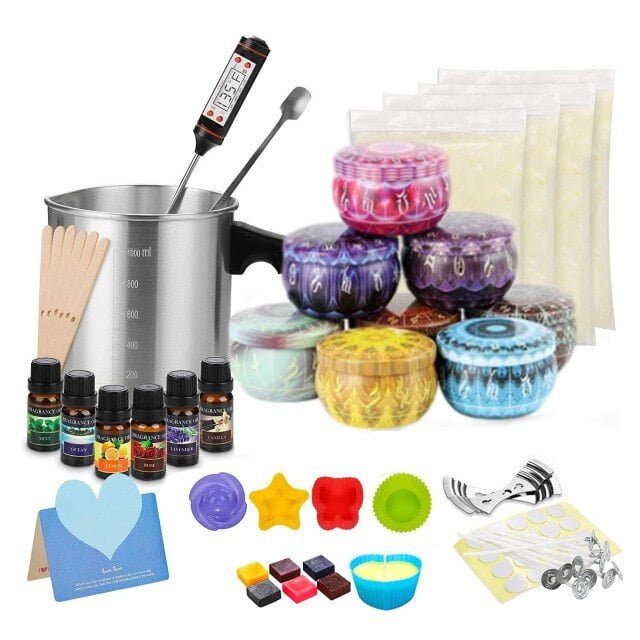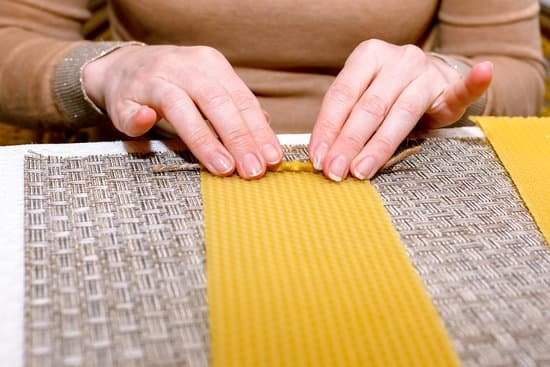Wood wicks for candle making have become increasingly popular in recent years, bringing a natural and rustic element to homemade candles. The rising trend of using wood wicks stems from their unique crackling sound when burned, reminiscent of a cozy fireplace. Not only do wood wicks add a touch of charm to candles, but they also come with a range of benefits that set them apart from traditional cotton wicks.
One of the key advantages of opting for wood wicks over cotton is their ability to provide a longer and cleaner burn. Wood wicks are known for producing minimal soot and residue compared to cotton wicks, resulting in a more eco-friendly candle experience. Additionally, the aesthetic appeal of wood wicks adds an elegant and modern twist to candle creations, making them stand out among traditional options.
As the demand for wood wick candles continues to grow, there is an array of different types of wood wicks available on the market. From standard wooden wicks to specialty varieties like double-wick or crackling wicks, each type offers unique characteristics that cater to various preferences. Exploring the world of wood wick options allows candle makers to experiment with different sizes, shapes, and burning styles to create custom candles that suit their individual needs and preferences.
Benefits of Using Wood Wicks
Wood wicks for candle making have been gaining popularity among crafters and candle enthusiasts due to their unique benefits. Here are some advantages of opting for wooden wicks over traditional cotton wicks:
1. Enhanced Aesthetic Appeal: Wood wicks add a touch of rustic charm to candles, providing a visually appealing element to your creations. The crackling sound produced by burning wood wicks also adds to the sensory experience, creating a cozy ambiance.
2. Clean and Even Burn: Wood wicks are known for their clean and even burn, unlike cotton wicks that may produce soot or smoke. This results in a longer-lasting candle with minimal residue, ensuring a more enjoyable burning experience overall.
3. Better Scent Throw: Wooden wicks have the ability to enhance the scent throw of candles, allowing the fragrance to disperse more effectively throughout the room. This means that candles made with wood wicks can fill larger spaces with their captivating aroma.
Incorporating wood wicks into your candle making projects can elevate the quality and appeal of your creations, providing a unique and enjoyable experience for both yourself and those who appreciate your handcrafted candles.
Types of Wood Wicks Available
When it comes to choosing the right wood wick for your candle making project, there are several types of wood wicks available in the market, each with its own unique characteristics. Here is a breakdown of some popular varieties:
- Cherry Wood Wicks: Known for their clean burn and minimal mushrooming, cherry wood wicks are a popular choice for those looking for a consistent and even burn.
- Cedar Wood Wicks: Cedar wood wicks offer a crackling sound reminiscent of a cozy fireplace, adding an extra touch of ambiance to your candles.
- Maple Wood Wicks: Maple wood wicks are known for their stability and ability to provide a long-lasting burn, making them ideal for larger candles.
Each type of wood wick brings its own unique charm to your candle creations, so consider experimenting with different varieties to see which one suits your preferences and needs best.
In addition to the type of wood used, the size and shape of the wood wick can also affect how it performs in your candles. Some wood wicks come with a booster strip or adhesive tab at the base to make them easier to attach to the candle container.
Others may have a specific thickness or width that is better suited for certain candle sizes. It’s important to take these factors into consideration when selecting the right wood wick for your DIY candles.
How to Choose the Right Wood Wick for Your Candle
Wood wicks for candle making have gained popularity due to their aesthetic appeal, unique crackling sound, and clean burn. When it comes to choosing the right wood wick for your candle, there are a few key factors to consider to ensure optimal performance and burn consistency.
Consider the Candle Size
The size of your candle plays a crucial role in selecting the appropriate wood wick. For smaller candles, such as votives or tea lights, a thinner wood wick is recommended to prevent overpowering the flame. On the other hand, larger candles like jar candles or pillars may require thicker wood wicks to provide enough heat and fragrance throw.
Evaluate the Type of Wax
Different types of wax can affect how a wood wick burns. For soy wax candles, which tend to have a lower melting point, a softer wood wick like cedar or cherry is ideal as it can create a consistent burn pool. Paraffin wax, on the other hand, may work better with harder wood wicks like maple or bamboo that can withstand higher temperatures.
Experiment and Test
Ultimately, the best way to choose the right wood wick for your candle is through experimentation and testing. Try out different types of wood wicks in various sizes and see how they perform with different candle sizes and wax types. Keep notes on burn quality, flame height, and fragrance throw to determine which wood wick works best for your specific candle making needs.
Step-by-Step Guide on Using Wood Wicks
Wood wicks for candle making have become increasingly popular due to their unique aesthetic appeal and functional benefits. These wicks are not only visually appealing but also offer a longer and cleaner burn compared to traditional cotton wicks. In this step-by-step guide, we will walk you through the process of properly using wood wicks in your DIY candle making projects.
1. Prepare Your Materials: Before you start, gather all the necessary materials including wooden wicks, wax, a container for your candle, fragrance oils (if desired), a double boiler or microwave-safe container for melting wax, and any coloring agents you may want to use.
2. Secure the Wood Wick: Securely attach the wood wick to the bottom of your candle container using a small amount of melted wax. Make sure the wood wick is standing straight up in the center of the container.
3. Melt Your Wax: Melt the wax following the manufacturer’s instructions either in a double boiler or in short bursts in the microwave. Once fully melted, add any fragrance oils or coloring agents and stir gently to combine.
4. Pour Wax into Container: Carefully pour the melted wax into your container, ensuring that the wood wick remains centered. Leave some space at the top to avoid overflowing when lighting your candle.
5. Let Your Candle Set: Allow your candle to cool and set completely before trimming the wood wick to about ¼ inch above the surface of the wax. This will help ensure an even burn when you light your candle.
By following these steps and paying attention to details like securing the wood wick properly and allowing your candle to set correctly, you can enjoy creating beautiful candles with wood wicks that provide a unique and charming touch to any room’s ambiance.
| Wood Wick Type | Unique Characteristics |
|---|---|
| Birch Wood Wicks | Provide a soothing crackling sound reminiscent of a fireplace |
| Cedar Wood Wicks | Ideal for outdoor-themed candles with a natural rustic aroma |
| Maple Wood Wicks | Offering a clean burn and an elegant look for more sophisticated candles |
Troubleshooting Common Issues With Wood Wicks
Wooden wicks are becoming increasingly popular in the world of candle making due to their unique qualities and aesthetic appeal. However, like any other component in candle making, wood wicks can sometimes pose challenges that need to be addressed. Common issues such as tunneling, uneven burning, and difficulty with ignition can arise when using wood wicks. Understanding how to troubleshoot these problems is crucial in ensuring the success of your candle making projects.
One common issue that candle makers may encounter when working with wood wicks is tunneling. Tunneling occurs when the wax burns down the center of the candle, leaving excess wax along the sides untouched. To prevent tunneling with wood wicks, it is essential to ensure that the wick is properly trimmed before every use. Trimming the wooden wick to approximately 1/8 of an inch before lighting can help maintain an even burn and prevent tunneling.
Uneven burning is another issue that can occur when using wood wicks for candle making. Uneven burning typically results from an untrimmed or improperly placed wick. To address this problem, make sure to trim the wooden wick consistently before each use and position it in the center of your container or mold.
Additionally, avoid burning your candle for extended periods at a time as this can lead to uneven melting and burning. By following these guidelines, you can achieve a more uniform burn with your wood wick candles.
Another potential challenge with wood wicks is difficulty with ignition. If you find that your wooden wick is struggling to stay lit or produces weak flames, there are several steps you can take to fix this issue. First, check if there is any debris or ash buildup on the tip of the wick and gently remove it before relighting.
Additionally, ensure that the wooden wick has been properly primed by allowing it to soak in melted wax for a few minutes before lighting it. Properly primed wood wicks tend to ignite more easily and produce stronger flames for optimal burning performance.
| Common Issue | Troubleshooting Tip |
|---|---|
| Tunneling | Trim wooden wick to 1/8 inch before lighting |
| Uneven Burning | Ensure wick is centered and consistently trimmed; avoid long burn times |
| Difficulty with Ignition | Check for debris on tip, prime wood wick before lighting |
Best Practices for Wood Wick Candle Making
Wooden wicks for candle making have gained popularity in the crafting community due to their unique aesthetic appeal and benefits compared to traditional cotton wicks. When it comes to using wood wicks in your candle making projects, there are certain best practices and expert recommendations that can help ensure successful results. Whether you are a beginner or experienced candle maker, incorporating these techniques can help elevate your creations.
Choosing the Right Wood Wick
The first step in achieving a successful wood wick candle is selecting the right type of wood wick for your specific project. Different types of wood wicks offer varying burn characteristics, such as crackling sounds reminiscent of a fireplace or longer burn times.
Consider factors like the size of your candle, the type of wax you are using, and the desired ambiance when choosing a wood wick. Experiment with various wood wicks to find the perfect match for your unique candles.
Proper Wick Placement
Ensuring proper placement of the wood wick in your container is crucial for even burning and optimal performance. Make sure to center the wood wick in the middle of the container before pouring your hot wax. Using a metal or wooden stick to hold the wick in place while pouring can help maintain its position. Avoid placing the wood wick too close to the edges of the container, as this can lead to uneven burning and potential safety hazards.
Maintaining Candle Care
Once you have successfully created your wood wick candle, it is essential to practice proper candle care to prolong its lifespan and maintain its quality. Trim the wood wick before each use to prevent excessive mushrooming and ensure a clean burn.
Additionally, avoid burning a wood-wicked candle for more than 4 hours at a time to prevent overheating and potential issues like tunneling. By following these best practices, you can enjoy beautiful and high-quality candles made with wood wicks for years to come.
Conclusion
In conclusion, the increasing popularity of using wood wicks for candle making can be attributed to the numerous benefits they offer. From providing a unique crackling sound reminiscent of a cozy fireplace to their eco-friendly nature, wood wicks have become a favored choice among crafters and candle enthusiasts alike. The benefits of opting for wooden wicks over traditional cotton wicks are evident in the enhanced aesthetic appeal and improved performance of candles.
When considering the types of wood wicks available in the market, it’s essential to explore the various options and their unique characteristics. Different varieties like cherry, cedar, and birch wood wicks each bring their own distinct qualities to a candle, allowing for customization based on personal preferences and desired outcomes. Selecting the right wood wick for your candle can make a significant difference in its burning efficiency and overall quality.
As you embark on your DIY candle making projects using wood wicks, remember to follow best practices and techniques to ensure successful results. By incorporating expert recommendations into your candle making process, you can troubleshoot common issues such as tunneling and uneven burning effectively. Embrace the creativity and sustainability that wood wicks offer, and elevate your candle making endeavors with these versatile and charming components.
Experimenting with different types of wood wicks can open up a world of possibilities for creating beautifully crafted candles that not only look stunning but also provide a delightful sensory experience with their gentle crackling ambiance. So why not give wood wicks a try in your next candle making project? The results may surprise you.
Frequently Asked Questions
Are Wood Wicks Better for Candles?
Wood wicks are often preferred by many candle enthusiasts due to their crackling sound reminiscent of a cozy fireplace. They also tend to create a wider flame, resulting in a more evenly melted wax pool for a longer-lasting burn.
What Wood Makes a Good Candle Wick?
When it comes to choosing the type of wood for candle wicks, cedar is a popular option because of its mild scent that complements various fragrances. Another good choice is cherry wood, known for its clean burn and minimal soot production, ideal for eco-friendly candles.
Do You Need to Soak Wood Wicks for Candles?
It is recommended to soak wood wicks before lighting them in candles to ensure a proper and consistent burn. This process helps the wick absorb the wax effectively and prevents any uneven burning or tunneling issues that may arise from not properly priming the wick.

Welcome to my candle making blog! In this blog, I will be sharing my tips and tricks for making candles. I will also be sharing some of my favorite recipes.





